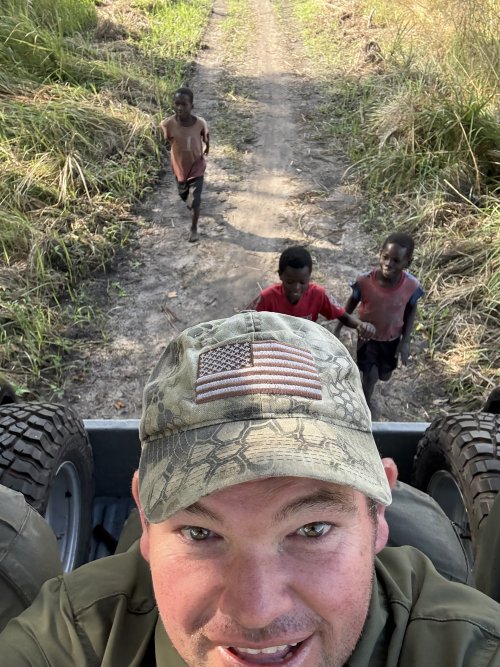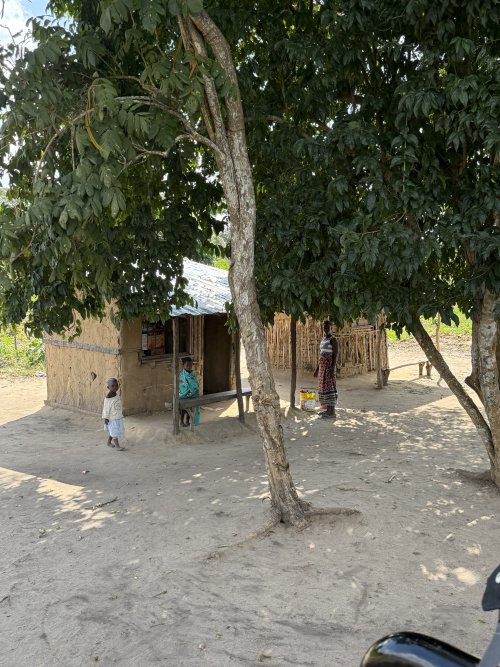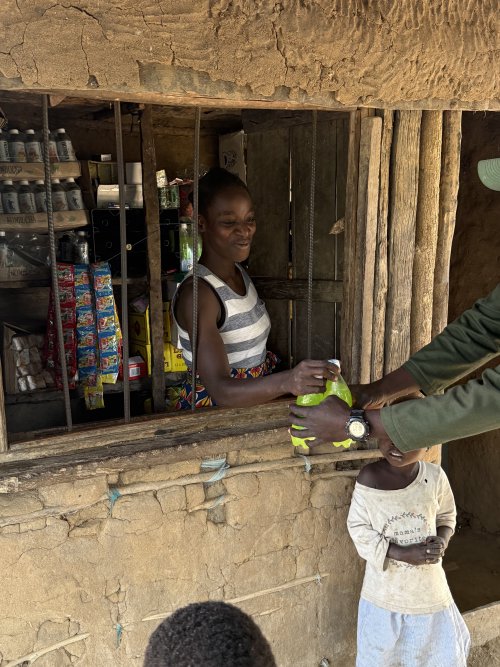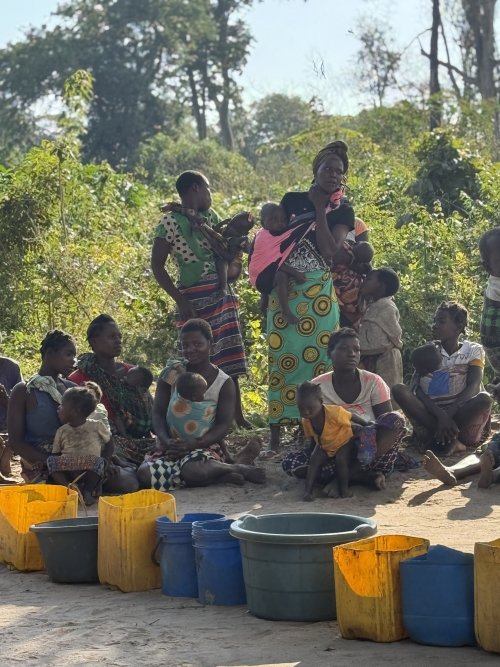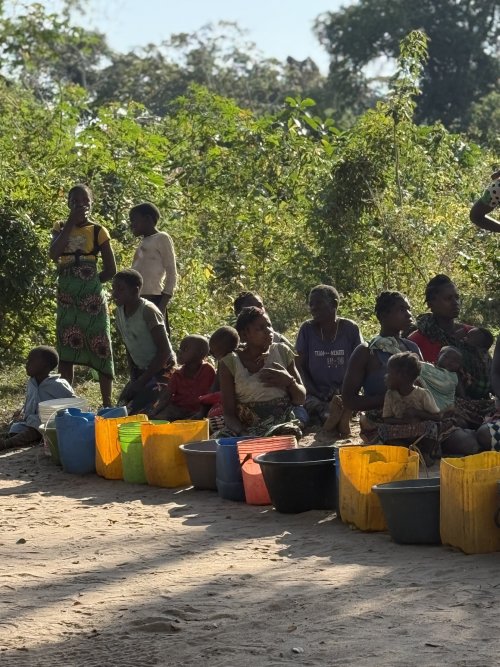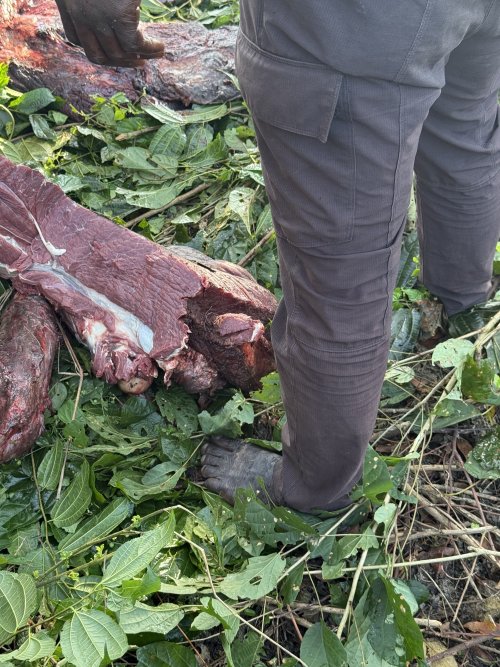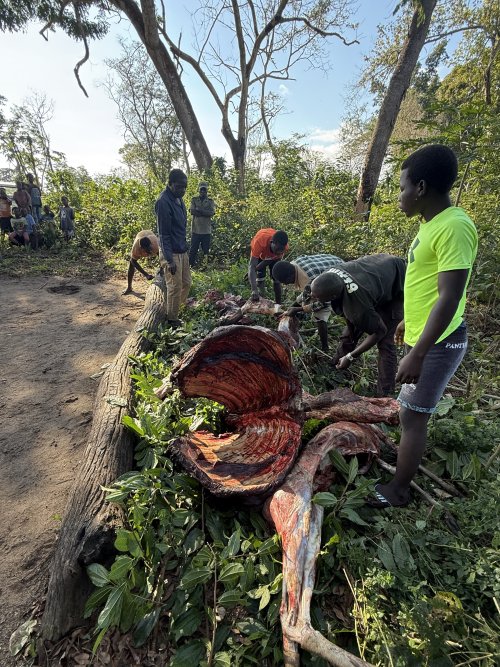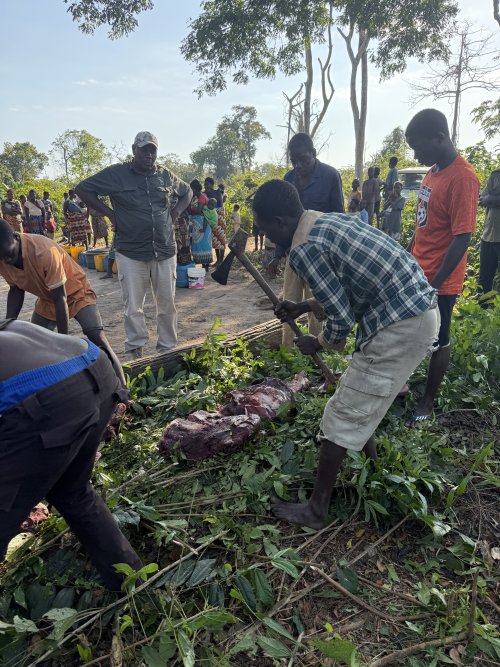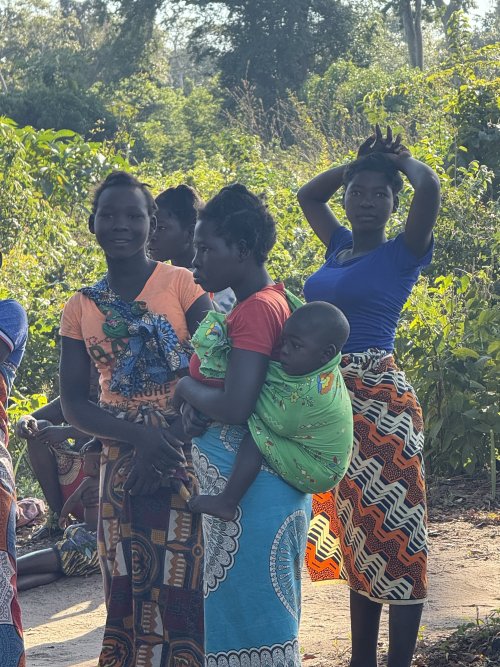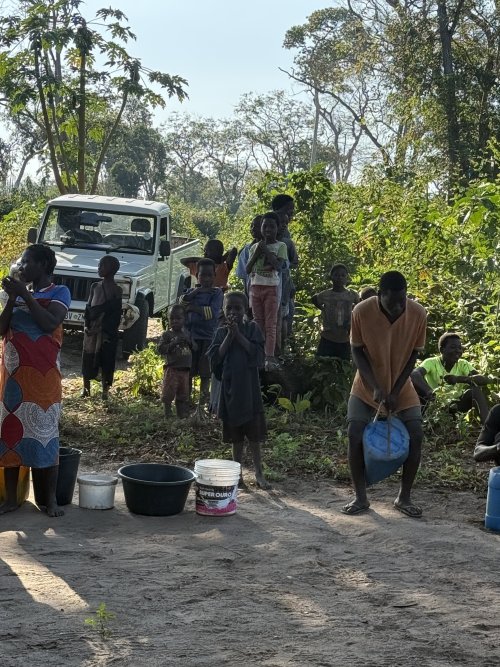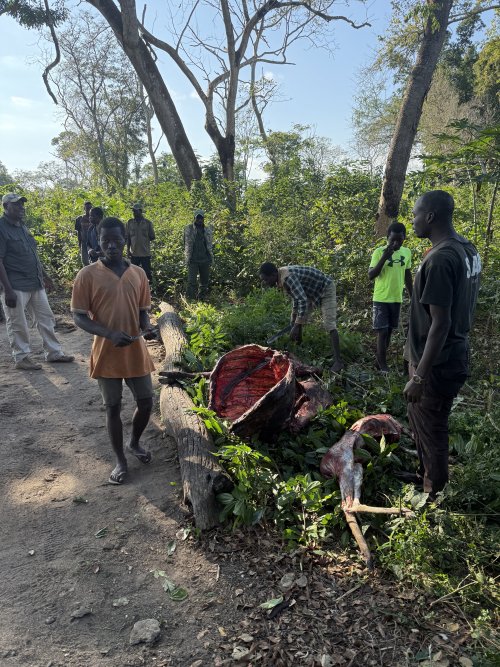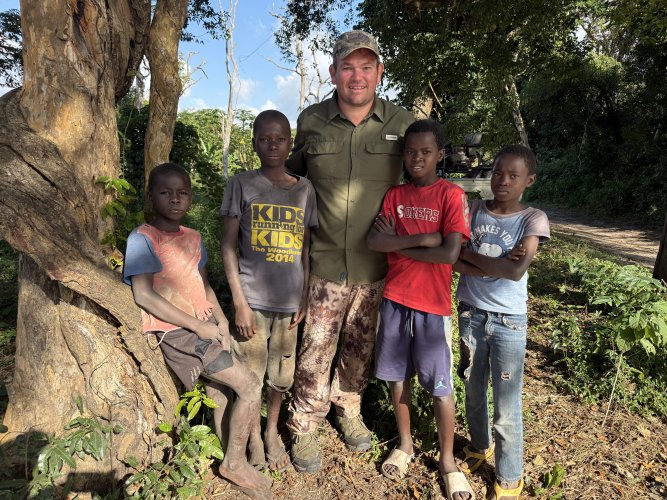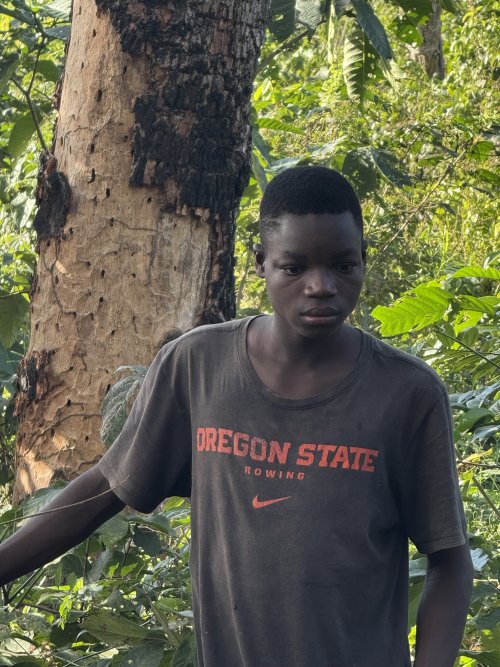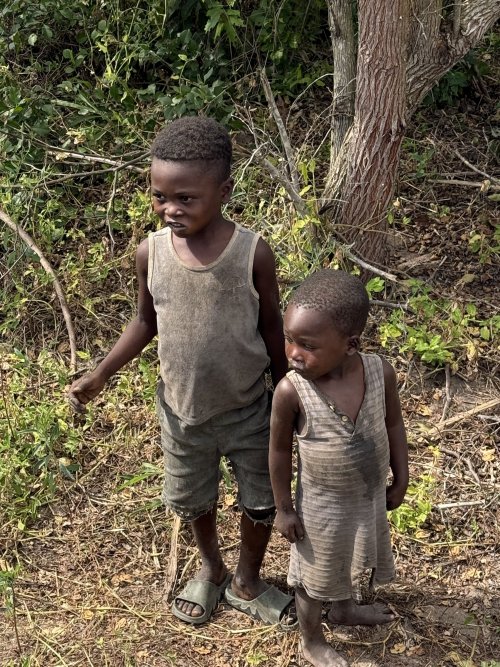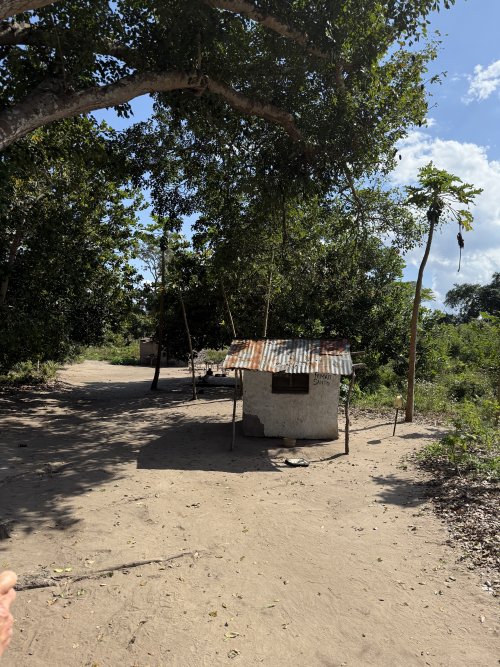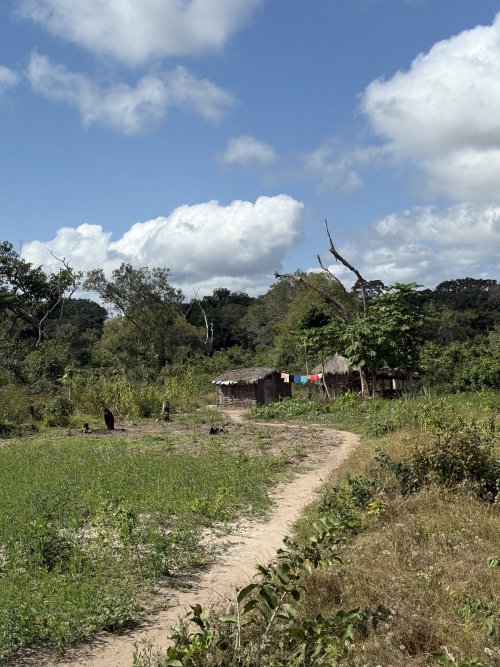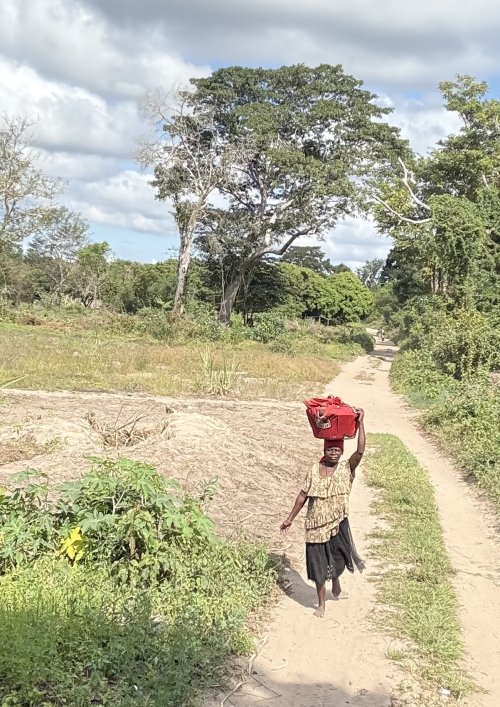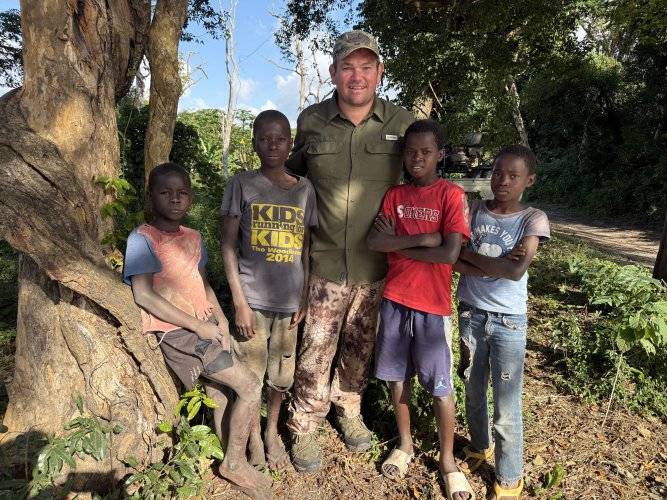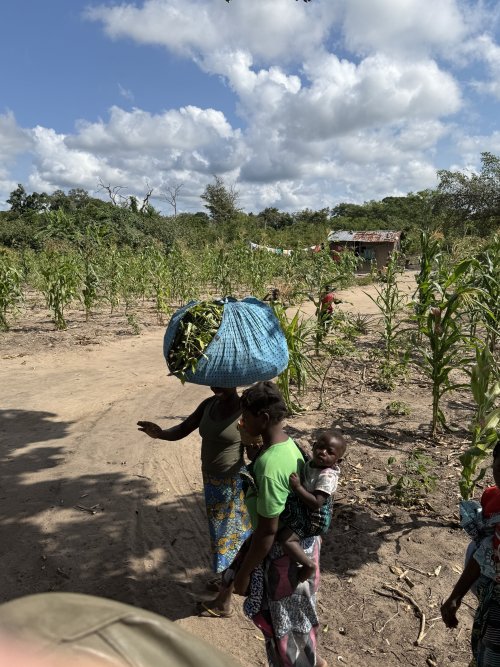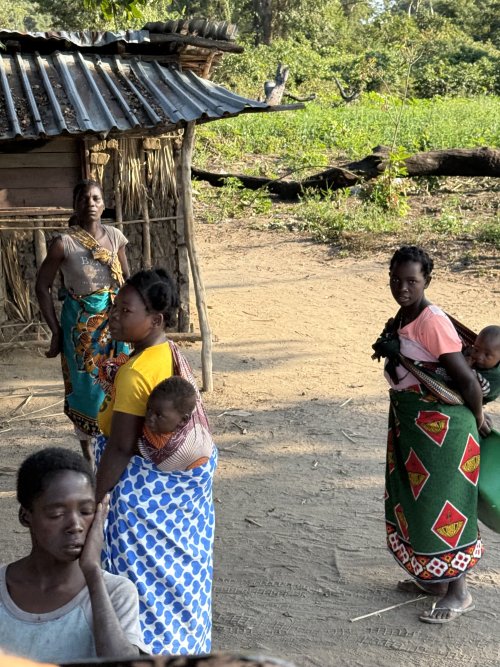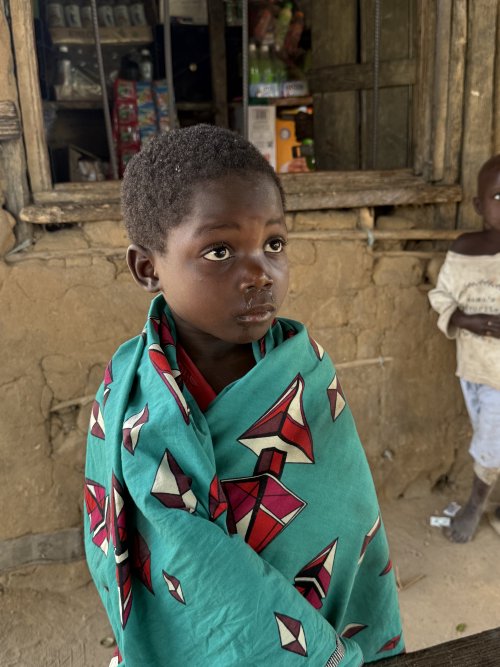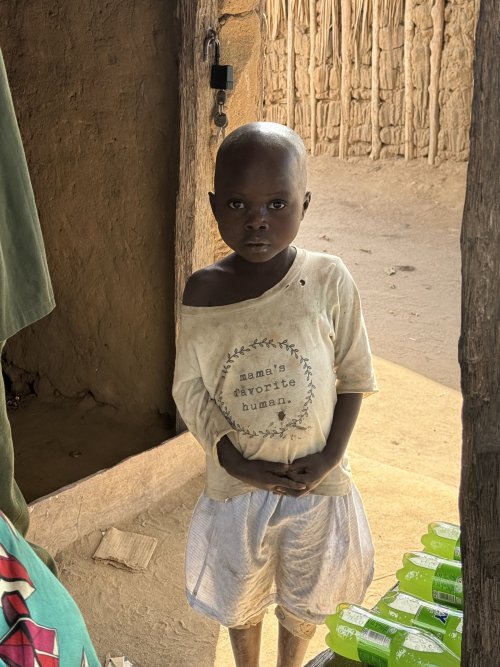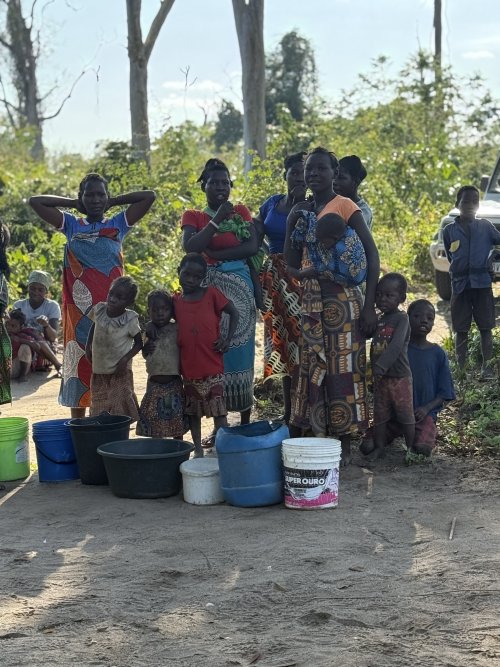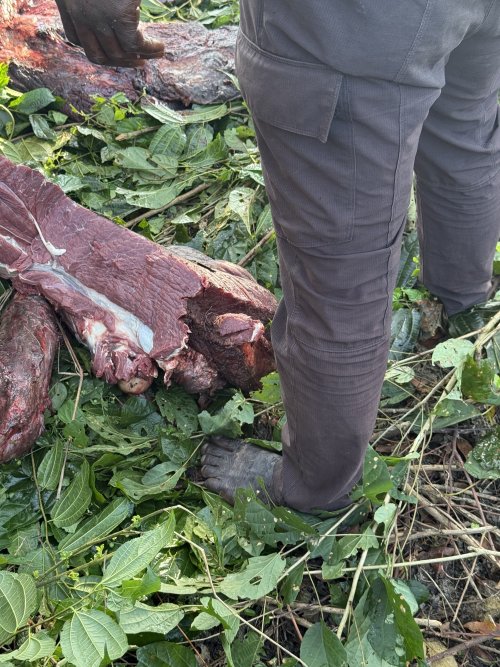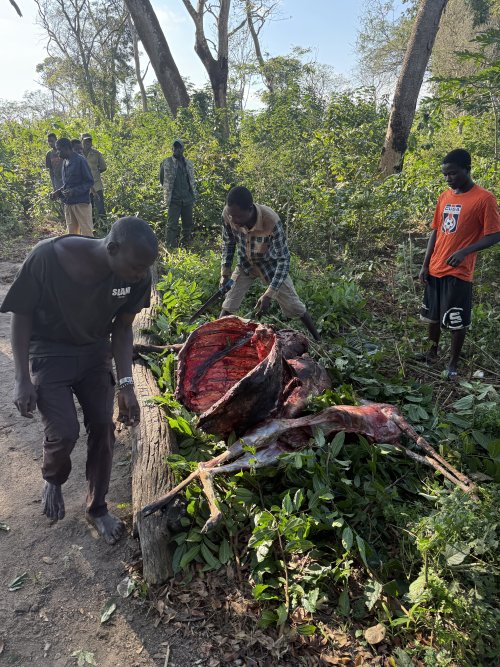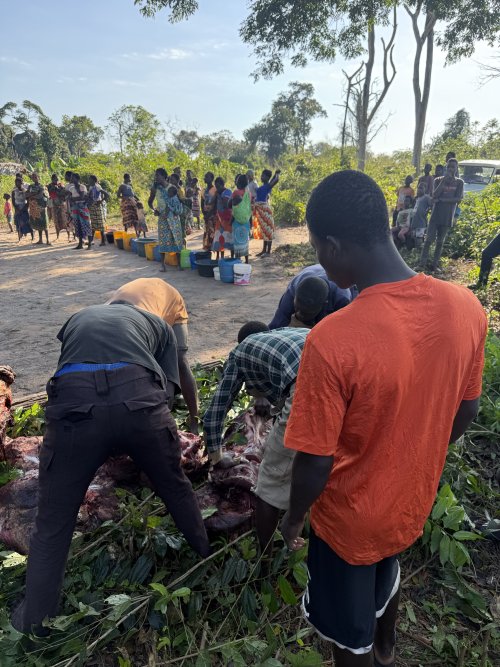MTpubliclander
Active member
Awesome so far! Keep it up!!!
Follow along with the video below to see how to install our site as a web app on your home screen.
Note: This feature may not be available in some browsers.
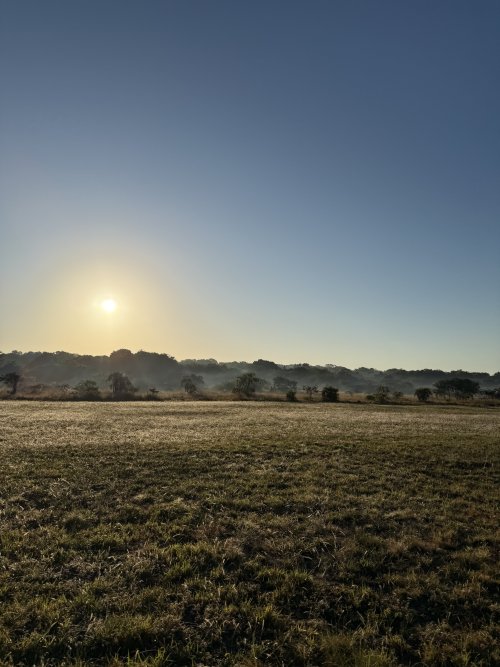
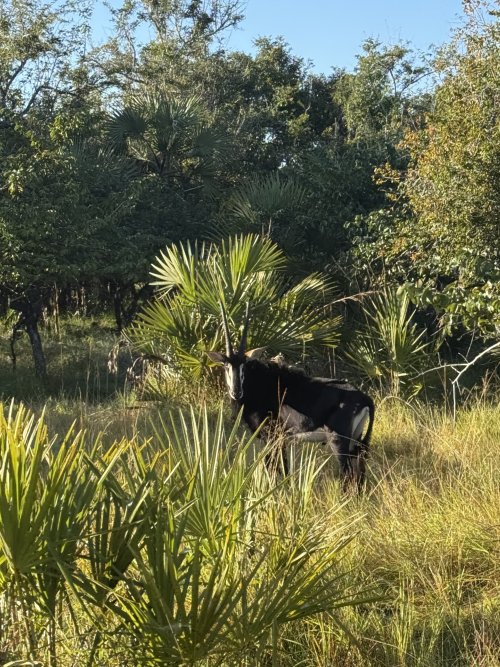

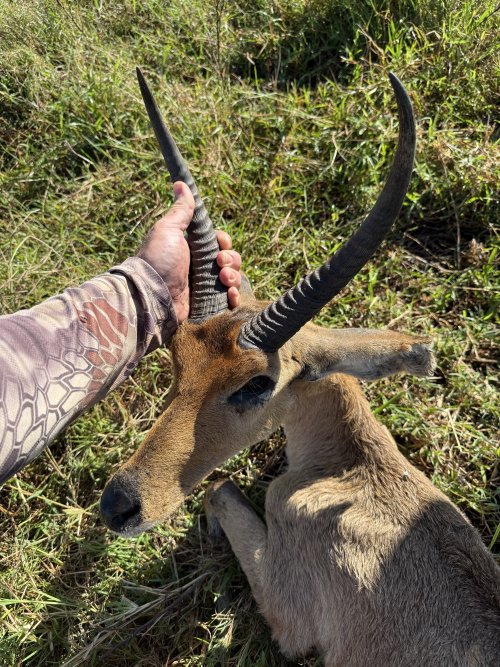
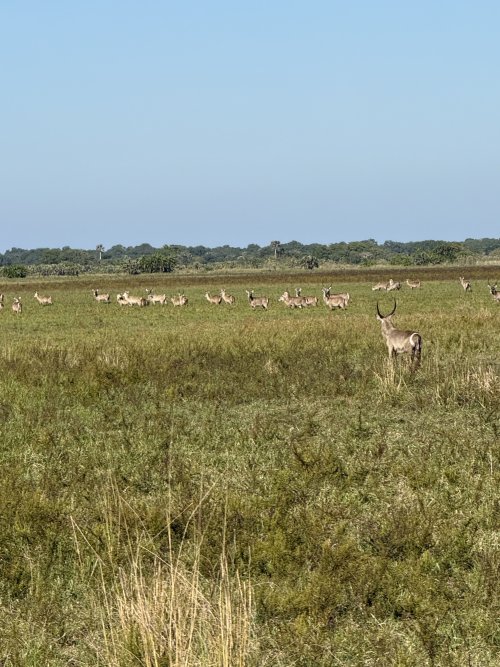 I said “No, not the waterbuck, lower in the grass. It’s moving like a cat.” After a few more seconds of looking he exclaimed, “Cheetah!” And sure enough it was, the long graceful feline was gliding along through the grass at a casual walk. When I got my binos on him, I could see that it was radio collared. We pointed it out to Bredger and as we sat there watching it it was spotted an oribi bedded down straight in its path. A warthog had also stood up close by and was watching the cheetah with great interest. For a minute, we all thought the cheetah was headed for the Oribi and we were fixing to get to see some discovery channel action live, and in the flesh! This time I was for sure rooting for the cheetah, but alas, I was disappointed. He was neither hungry nor interested in the oribi. Passing close by the Oribi and just beyond where the warthog stood watching the scene, he faded off into the grass never to be seen again.
I said “No, not the waterbuck, lower in the grass. It’s moving like a cat.” After a few more seconds of looking he exclaimed, “Cheetah!” And sure enough it was, the long graceful feline was gliding along through the grass at a casual walk. When I got my binos on him, I could see that it was radio collared. We pointed it out to Bredger and as we sat there watching it it was spotted an oribi bedded down straight in its path. A warthog had also stood up close by and was watching the cheetah with great interest. For a minute, we all thought the cheetah was headed for the Oribi and we were fixing to get to see some discovery channel action live, and in the flesh! This time I was for sure rooting for the cheetah, but alas, I was disappointed. He was neither hungry nor interested in the oribi. Passing close by the Oribi and just beyond where the warthog stood watching the scene, he faded off into the grass never to be seen again.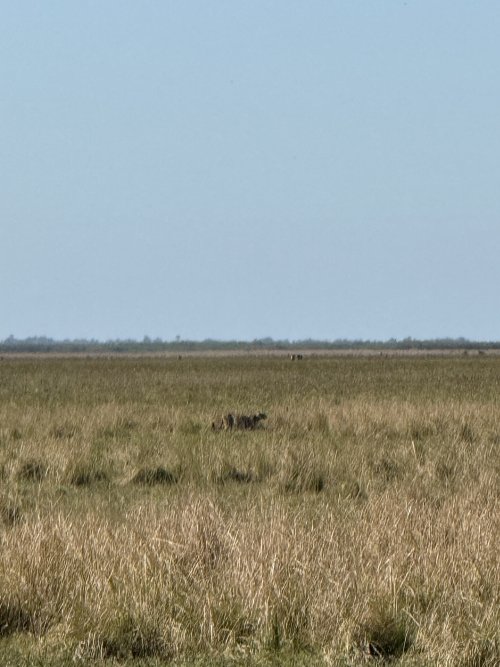 Except for the fact that cheetahs are not nocturnal the odds of seeing one of them was about as low as seeing the Jaguar we saw on the first day. Cheetahs had been completely extirpated from the region and have only been brought back and reintroduced recently, thanks to funding from the Cabela family foundation. Later, talking to one of the biologist of Coutada 11, she told me that us seeing that cat was pretty special and there was only four collared cheetahs in the entire flood plane, which is hundreds of square miles. Not a game species, but being what it was I’ll just count that as species #17 nonetheless.
Except for the fact that cheetahs are not nocturnal the odds of seeing one of them was about as low as seeing the Jaguar we saw on the first day. Cheetahs had been completely extirpated from the region and have only been brought back and reintroduced recently, thanks to funding from the Cabela family foundation. Later, talking to one of the biologist of Coutada 11, she told me that us seeing that cat was pretty special and there was only four collared cheetahs in the entire flood plane, which is hundreds of square miles. Not a game species, but being what it was I’ll just count that as species #17 nonetheless.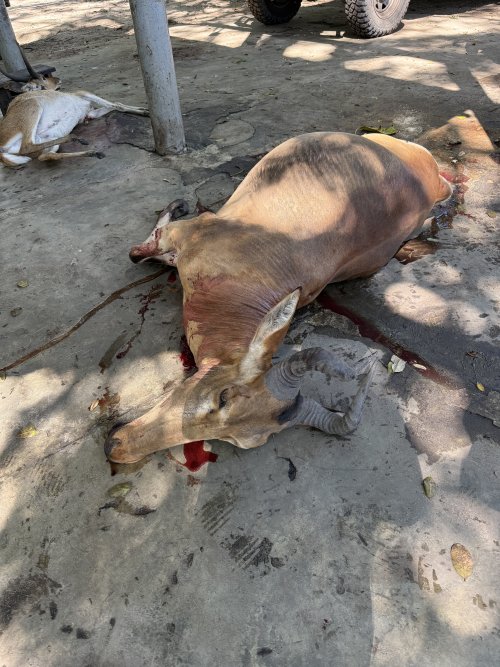
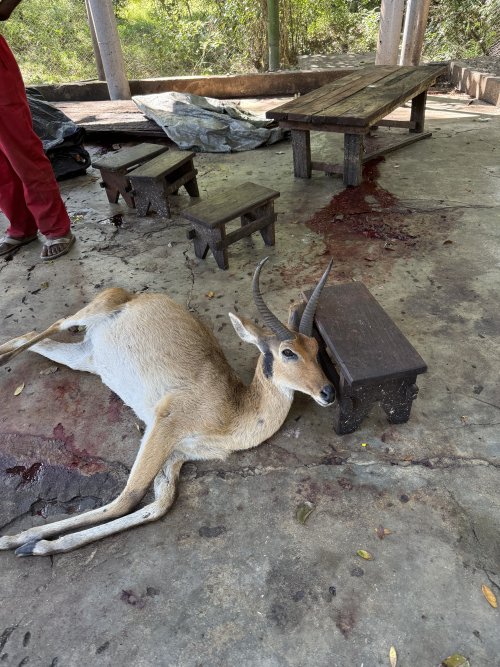
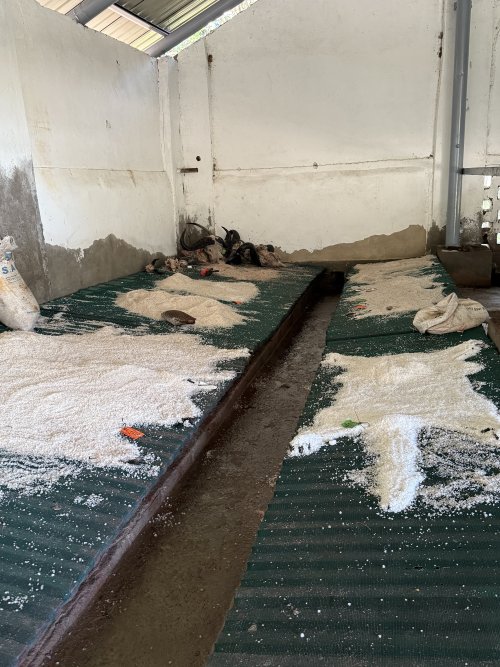

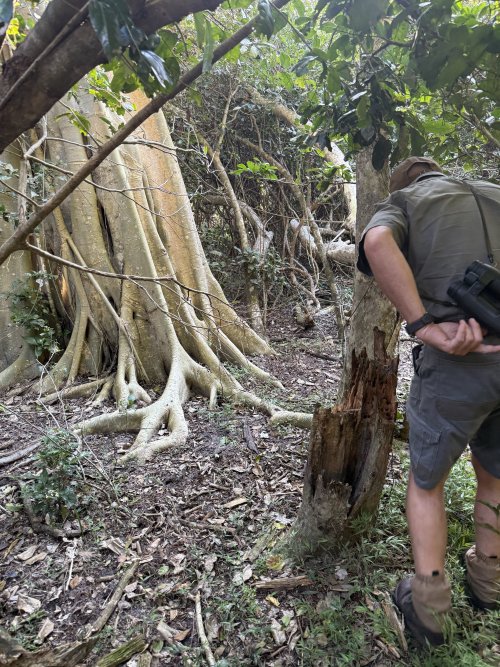 Bredger told me there was a pan we were heading to check out that usually had Nyala feeding in it every evening. A pan is what they call any large bowl-like naturally clear area in the forest that’s characterized by tall grasses and often wet or marshy in the middle. Flying overhead you can see the forest are pock marked with these large oval shaped natural clearings.
Bredger told me there was a pan we were heading to check out that usually had Nyala feeding in it every evening. A pan is what they call any large bowl-like naturally clear area in the forest that’s characterized by tall grasses and often wet or marshy in the middle. Flying overhead you can see the forest are pock marked with these large oval shaped natural clearings. 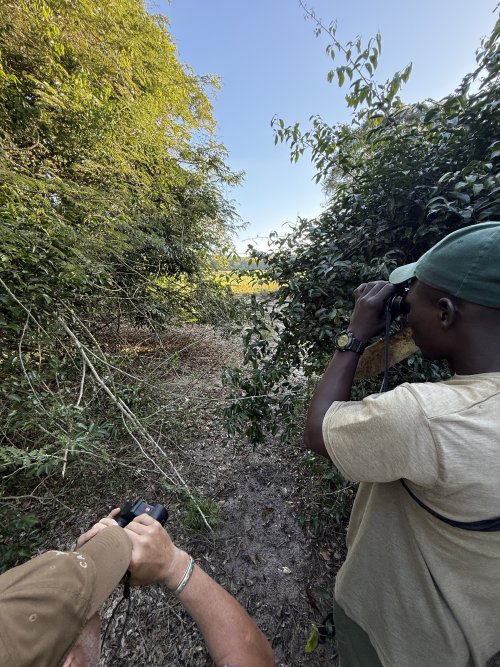
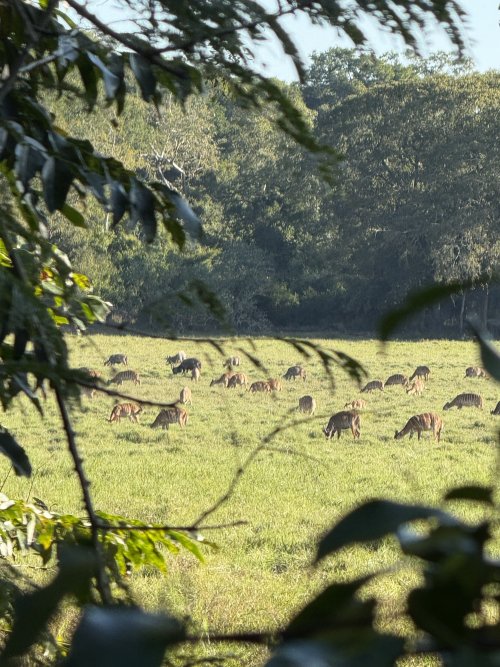 As we eased up to see the opening I immediately spotted Nyala cows. A lot of them. On the side of the pan we were looking into there were at least 100 Nyala. I never knew they would run in such large numbers. This place was absolutely crawling with them. No trophy size bulls were present though. Wouldn’t have mattered anyway because I’m not sure how we would’ve gotten into bow range without an extreme amount of luck. After carefully looking over the pan we backed off into the forests again to move on to the next spot.
As we eased up to see the opening I immediately spotted Nyala cows. A lot of them. On the side of the pan we were looking into there were at least 100 Nyala. I never knew they would run in such large numbers. This place was absolutely crawling with them. No trophy size bulls were present though. Wouldn’t have mattered anyway because I’m not sure how we would’ve gotten into bow range without an extreme amount of luck. After carefully looking over the pan we backed off into the forests again to move on to the next spot. Just before dark there was a good bull that stood off in the brush watching us pass. I was able to slip down out of the cruiser without spooking him and got to 35 yards and once again he bolted just before I could shoot him. Good grief this place is fun!
Just before dark there was a good bull that stood off in the brush watching us pass. I was able to slip down out of the cruiser without spooking him and got to 35 yards and once again he bolted just before I could shoot him. Good grief this place is fun!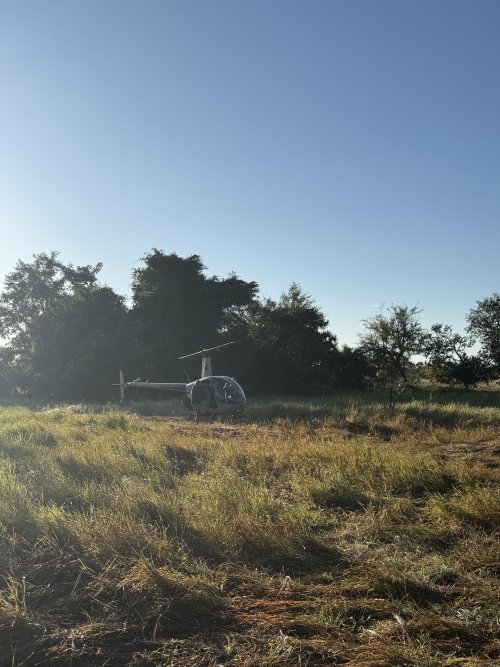 This ain’t Alaska and there aren’t any no hunting on flight day rules. As difficult as they can be to find in this vast landscape I can promise you it didn’t feel unfair in the slightest.
This ain’t Alaska and there aren’t any no hunting on flight day rules. As difficult as they can be to find in this vast landscape I can promise you it didn’t feel unfair in the slightest.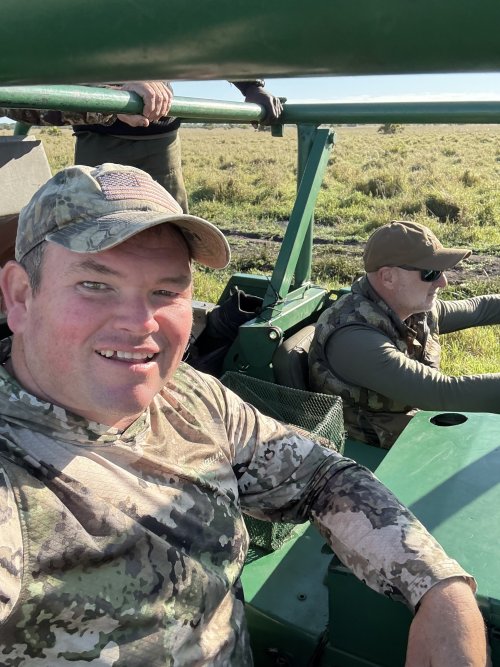
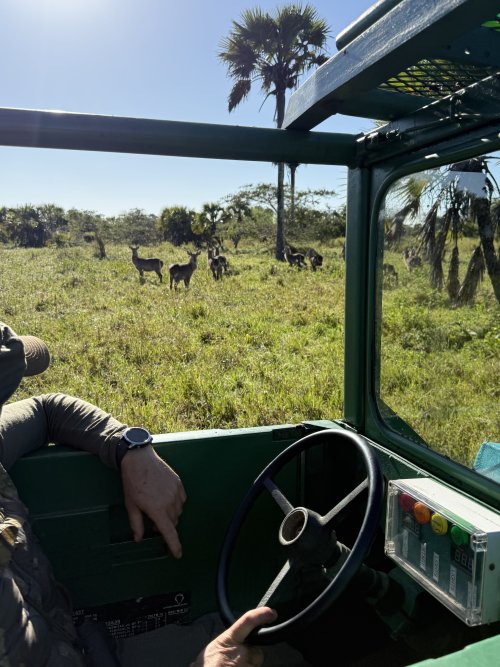

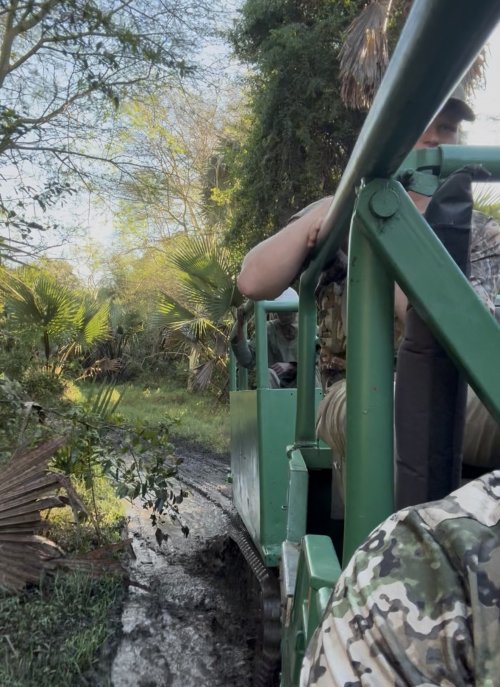
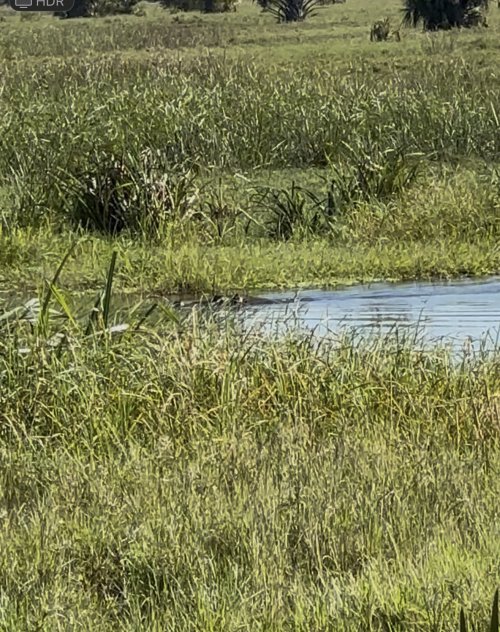
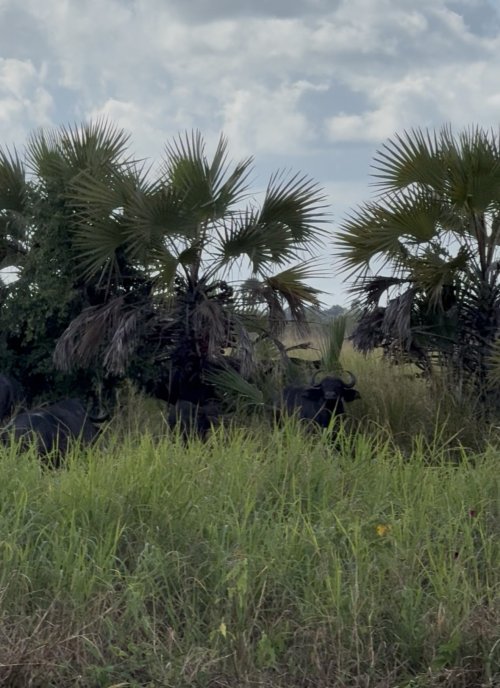
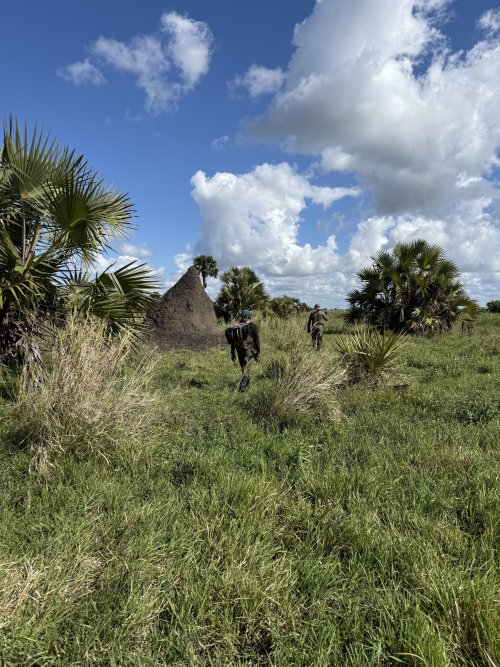


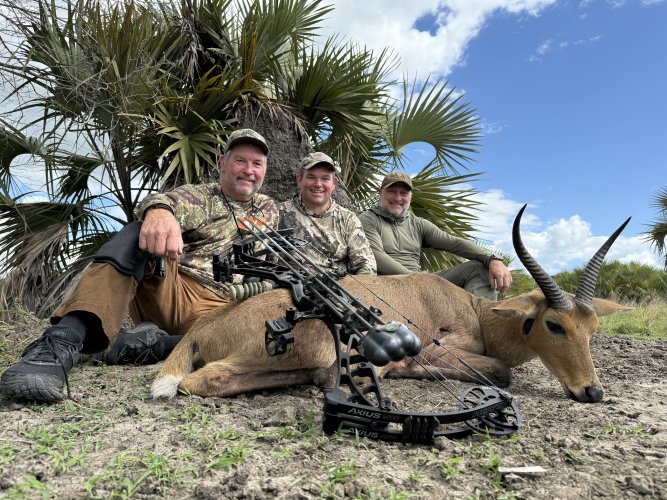
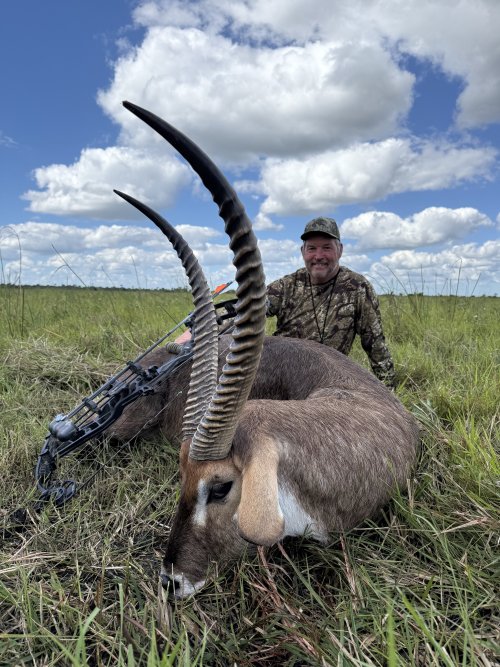
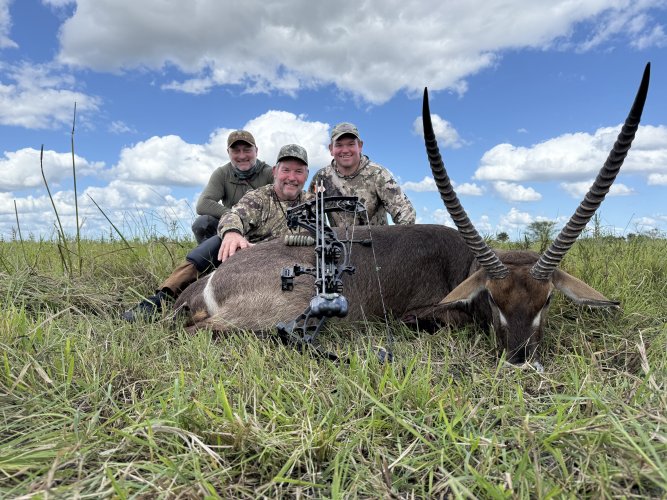
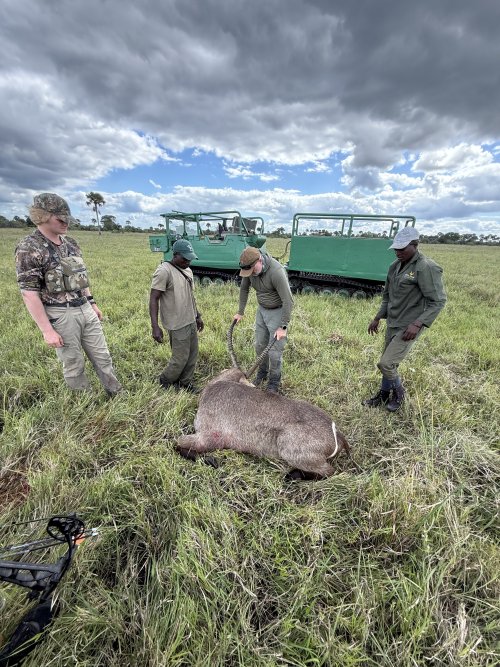
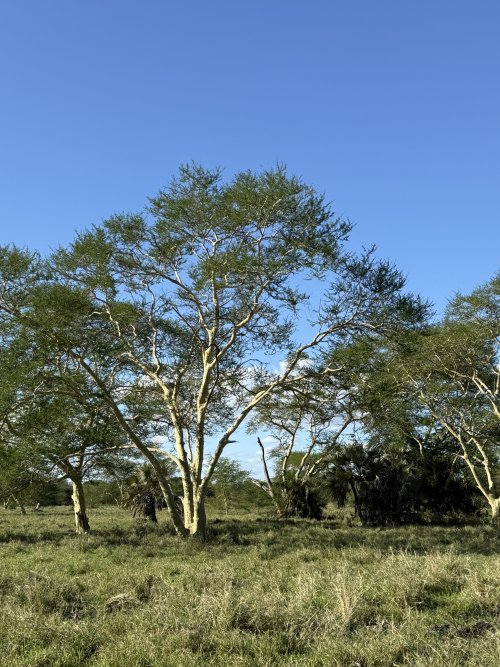 It didn’t take long before we found just what we were looking for. This time he stopped broadside 52 yards away. 50 yards has been my average practice distance for the last month and I was confident as I could be. Coming to full draw, settling my anchor and carefully taking aim all felt good. When I released, however, the world crumbled around me. It looked like my arrow fishtailed up and down passing through three different zip codes before it got to the water Buck. The arrows final resting place was 3 feet low in the dirt before his feet. WHAT THE HECK?! I had shot, and shot, and shot the last several months leading up to this trip without any bow problems. This thing was paper tuning a perfect bullet hole, and I even filmed it in slow motion, several times just to admire the beautiful arrow flight. Something was bad wrong. Everyone watching could see that something was wrong too, that was more than just a terrible shot. We did not have a bow target with us so I had Bredger drive over to a termite mound. I swapped out to my field tips that I had in the bow case with me and took a practice shot. This time at 20 yards. At 20 yards I missed the mark by about 20 inches. The next shot was in the total opposite direction. Even at 20 yards I could barely keep a 3 foot group. After some tinkering around and filming up close using the slow motion feature on the iPhone camera I found the problem. My drop away rest had started malfunctioning. It was not dropping in time and the arrow was being kicked up when the fletching hit it, which then made the fletching crash into the bottom of my sight ring. At 50 yards it’s a wonder my arrow hit as close as it did. In this case, I was extremely thankful it was a complete miss. Even had I hit it in a good area, when your arrow flight is that bad it completely messes up the ability to penetrate properly. If I could not get this fixed this bow hunt was going to have to turn into a rifle hunt. I tried shooting Dad‘s bow a little bit and his anchor point and peep site is so drastically different from mine that I never could hit consistently enough to be comfortable shooting at an animal.
It didn’t take long before we found just what we were looking for. This time he stopped broadside 52 yards away. 50 yards has been my average practice distance for the last month and I was confident as I could be. Coming to full draw, settling my anchor and carefully taking aim all felt good. When I released, however, the world crumbled around me. It looked like my arrow fishtailed up and down passing through three different zip codes before it got to the water Buck. The arrows final resting place was 3 feet low in the dirt before his feet. WHAT THE HECK?! I had shot, and shot, and shot the last several months leading up to this trip without any bow problems. This thing was paper tuning a perfect bullet hole, and I even filmed it in slow motion, several times just to admire the beautiful arrow flight. Something was bad wrong. Everyone watching could see that something was wrong too, that was more than just a terrible shot. We did not have a bow target with us so I had Bredger drive over to a termite mound. I swapped out to my field tips that I had in the bow case with me and took a practice shot. This time at 20 yards. At 20 yards I missed the mark by about 20 inches. The next shot was in the total opposite direction. Even at 20 yards I could barely keep a 3 foot group. After some tinkering around and filming up close using the slow motion feature on the iPhone camera I found the problem. My drop away rest had started malfunctioning. It was not dropping in time and the arrow was being kicked up when the fletching hit it, which then made the fletching crash into the bottom of my sight ring. At 50 yards it’s a wonder my arrow hit as close as it did. In this case, I was extremely thankful it was a complete miss. Even had I hit it in a good area, when your arrow flight is that bad it completely messes up the ability to penetrate properly. If I could not get this fixed this bow hunt was going to have to turn into a rifle hunt. I tried shooting Dad‘s bow a little bit and his anchor point and peep site is so drastically different from mine that I never could hit consistently enough to be comfortable shooting at an animal.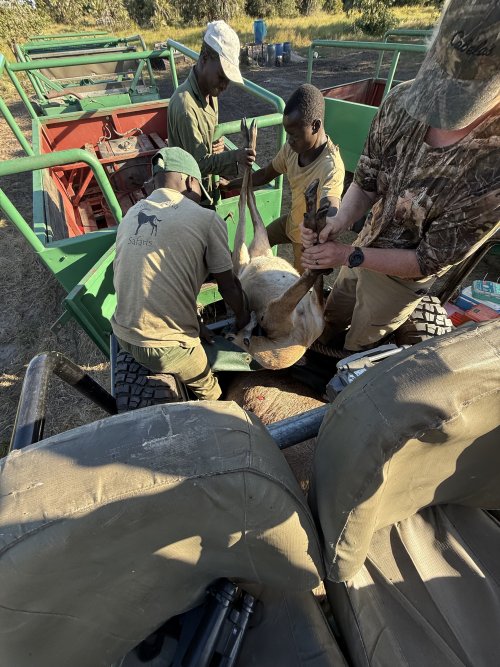
 As we set off after breakfast the bush seemed alive with animals. Especially with warthogs. They were around every turn. But then again that’s everyday in Coutada 11 I guess. We stopped and looked over 3 different shooters in the first hour and a half that we tried to get close on but never could get under 40 yards on. Action packed morning for sure. I’m not sure where we were headed today, I just know it wasn’t going to be an extreme distance because we were planning to be back at camp by lunch time.
As we set off after breakfast the bush seemed alive with animals. Especially with warthogs. They were around every turn. But then again that’s everyday in Coutada 11 I guess. We stopped and looked over 3 different shooters in the first hour and a half that we tried to get close on but never could get under 40 yards on. Action packed morning for sure. I’m not sure where we were headed today, I just know it wasn’t going to be an extreme distance because we were planning to be back at camp by lunch time.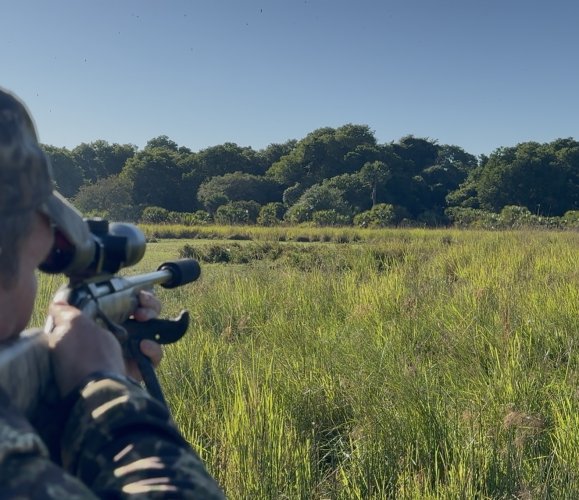 Instantly I have the bushbuck in the scope, as he immediately disappears behind some grass. “He moved behind the grass I need to get to the left.” And as if we had been rehearsing the move for years I raise the rifle and Bredger slides over the sticks. Within seconds, he is in the scope again, but once again he is disappearing into the grass, heading to the right. “I gotta move to the left again quick, he’s gone behind the grass again!” The same quick maneuver is repeated, but this time as I look through the scope, he is nowhere to be found. The sea of tall grass has swallowed the small 110 lb. animal up as if he never existed. My gut immediately feels the disappointment, so close, yet my opportunity seems to have slipped away. As Bredger keeps scanning with his binos, I stay down on the scope, looking for movement in the grass. And then I see it, he is a tad further out, but moving back to the left through a small opening between two clumps of tall grass. “ I see him!” Bredger said, “Hit him on the shoulder!” And before he barely got the words out of his mouth the rifle barked! The little bushbuck leaped into the air with his front legs flailing in a violent reaction and disappeared into the grass.
Instantly I have the bushbuck in the scope, as he immediately disappears behind some grass. “He moved behind the grass I need to get to the left.” And as if we had been rehearsing the move for years I raise the rifle and Bredger slides over the sticks. Within seconds, he is in the scope again, but once again he is disappearing into the grass, heading to the right. “I gotta move to the left again quick, he’s gone behind the grass again!” The same quick maneuver is repeated, but this time as I look through the scope, he is nowhere to be found. The sea of tall grass has swallowed the small 110 lb. animal up as if he never existed. My gut immediately feels the disappointment, so close, yet my opportunity seems to have slipped away. As Bredger keeps scanning with his binos, I stay down on the scope, looking for movement in the grass. And then I see it, he is a tad further out, but moving back to the left through a small opening between two clumps of tall grass. “ I see him!” Bredger said, “Hit him on the shoulder!” And before he barely got the words out of his mouth the rifle barked! The little bushbuck leaped into the air with his front legs flailing in a violent reaction and disappeared into the grass.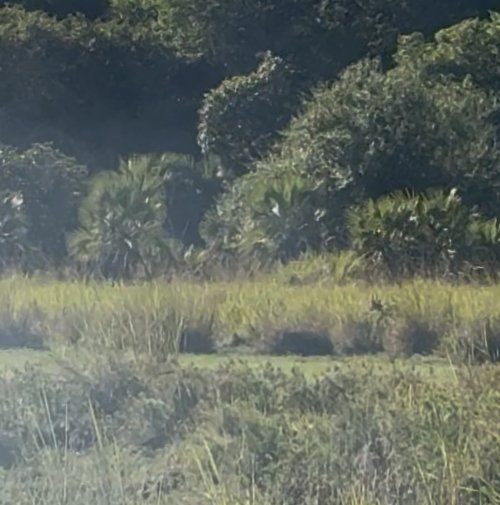 “I think you smoke him dude!” Bredger exclaimed, as he ranged the spot. It was 140 yards away. We set off on a walk around the edge of the marsh opening to keep from having to wade through any of the deeper water, but we made it to where the bushbuck had been standing in just a few minutes.
“I think you smoke him dude!” Bredger exclaimed, as he ranged the spot. It was 140 yards away. We set off on a walk around the edge of the marsh opening to keep from having to wade through any of the deeper water, but we made it to where the bushbuck had been standing in just a few minutes.
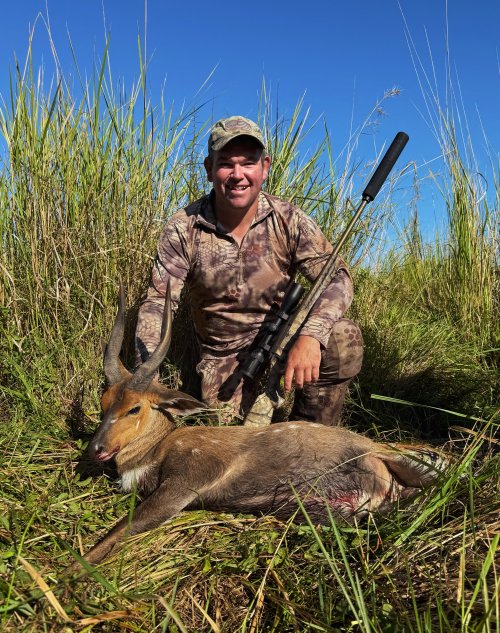
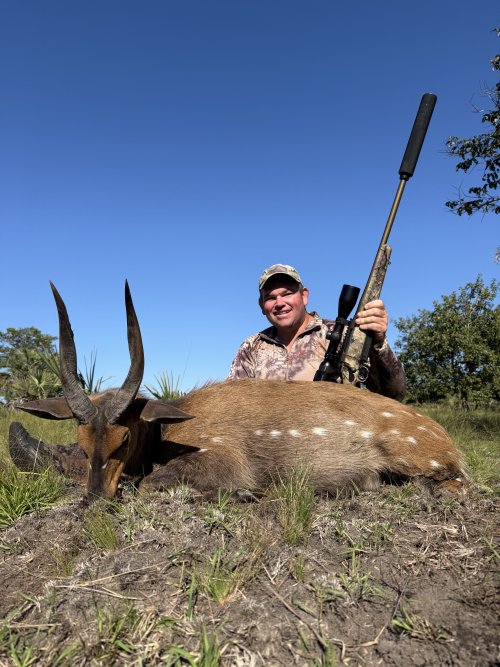
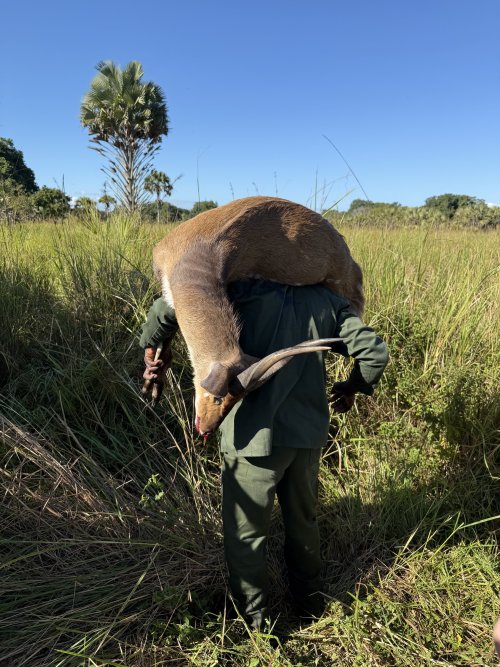

They have some source of clean purified water they make it with, and drinking water that is safe too. My PH, who is a native Texan, assured me he’s been drinking it there for years with no problems. No digestive issues for us so far!Enjoying your recounting of your adventure @KipCarson
I love the spiral horned ones especially well when the tips turn pale ivory color
PS: the ice in your glass is giving me a bit of trouble...I imagine it is made from purified water in your camp, but not something I'd routinely trust in lots of corners of Africa.
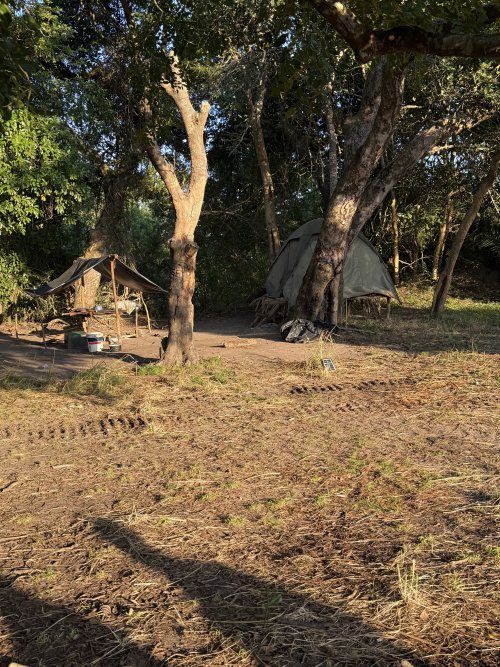
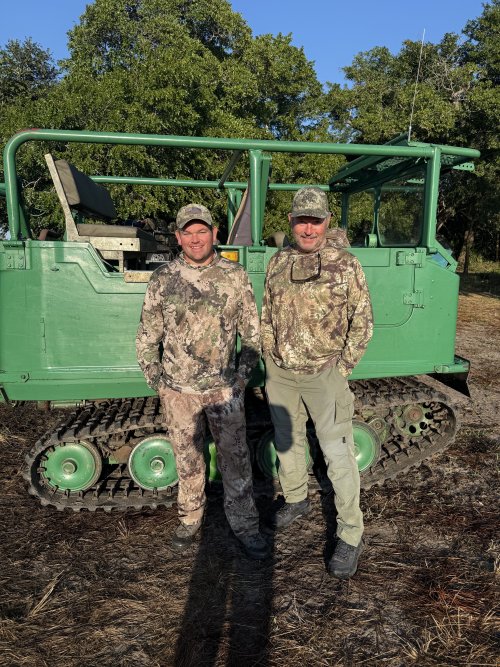
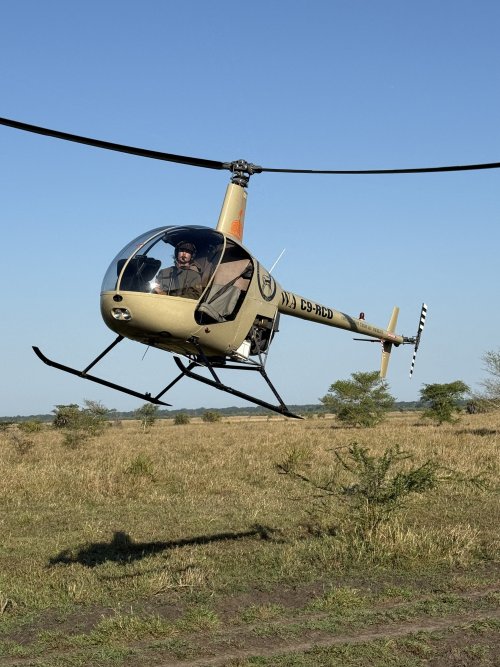 The chopper would drop Bredger off to us further up the road at a predetermined spot. We got to the place to pick him up and they were still gone looking for buffalo. As we talked I began to wonder what was taking so long. About that time Hamish gave voice to my concerns. “If they’ve been gone this long the buffalo must not be anywhere close by, this could turn into a very long day, “ he said with a rye chuckle. It was several more minutes before we heard the distant thwop of the rotors heading our direction. As we sat there, even after 5 days of immersive experience in Coutada 11, I was still in awe of the wildlife around us. From my perch on the BV I could count 8 different species at once dotted across the floodplain. Warthogs, waterbuck, reedbucks, hartebeest, Zebra, impala, sable, and oribi. Truly an amazing place.
The chopper would drop Bredger off to us further up the road at a predetermined spot. We got to the place to pick him up and they were still gone looking for buffalo. As we talked I began to wonder what was taking so long. About that time Hamish gave voice to my concerns. “If they’ve been gone this long the buffalo must not be anywhere close by, this could turn into a very long day, “ he said with a rye chuckle. It was several more minutes before we heard the distant thwop of the rotors heading our direction. As we sat there, even after 5 days of immersive experience in Coutada 11, I was still in awe of the wildlife around us. From my perch on the BV I could count 8 different species at once dotted across the floodplain. Warthogs, waterbuck, reedbucks, hartebeest, Zebra, impala, sable, and oribi. Truly an amazing place. One of the buffalo had started heading up out of the river bed toward a patch of trees further up the bank. As I got them in my scope Bredger said “Shoot the lead one. Hit him square in the shoulder.” He was 120 yards out and looked ready to take off as I settled the crosshairs square onto his shoulder. Maybe there were some other people making them nervous over there? This is a screen grab from the cellphone video. You can see him looking out direction between the two palms in front of us if you zoom in.
One of the buffalo had started heading up out of the river bed toward a patch of trees further up the bank. As I got them in my scope Bredger said “Shoot the lead one. Hit him square in the shoulder.” He was 120 yards out and looked ready to take off as I settled the crosshairs square onto his shoulder. Maybe there were some other people making them nervous over there? This is a screen grab from the cellphone video. You can see him looking out direction between the two palms in front of us if you zoom in.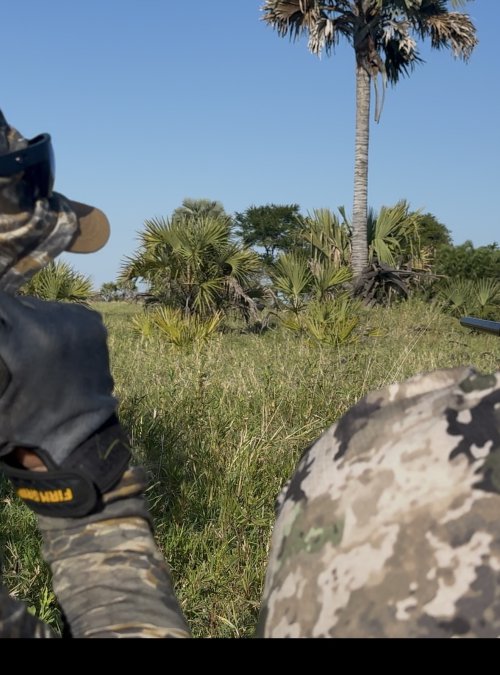
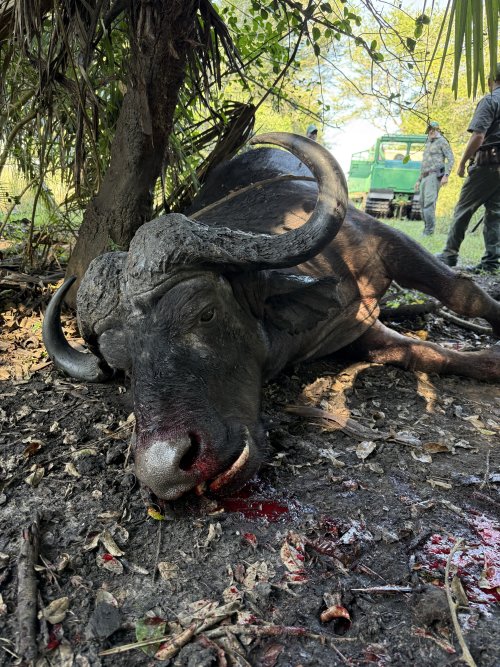

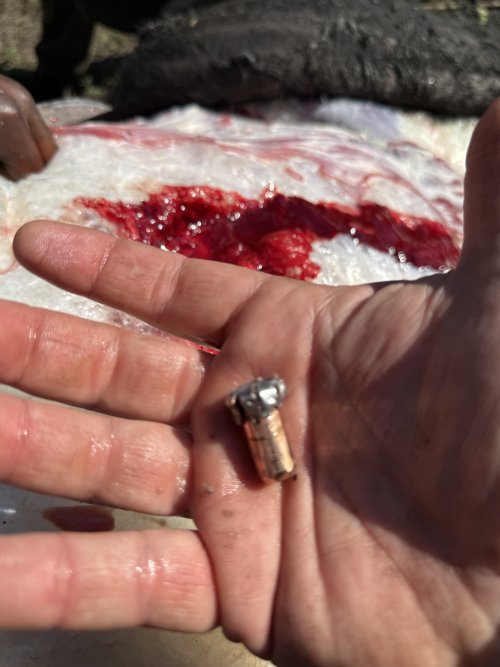 He had barely gone more than 40 yards. Bredger and Hamish looked him over good and it was their assessment that he was likely at least 10 years old. He wasn’t the widest at only around 35” but he had good hard bosses and all the signs of advancing age. I never did measure his width, quite frankly I really didn’t care about the numbers. His ears were a mangled mess of scars and tears from a decade of fights and close calls. I was just happy to be here and happy to get to hunt a Cape buffalo in Africa! There is a biologist who checks every buffalo killed and ages them. After he has done that they will let me know how old he was.
He had barely gone more than 40 yards. Bredger and Hamish looked him over good and it was their assessment that he was likely at least 10 years old. He wasn’t the widest at only around 35” but he had good hard bosses and all the signs of advancing age. I never did measure his width, quite frankly I really didn’t care about the numbers. His ears were a mangled mess of scars and tears from a decade of fights and close calls. I was just happy to be here and happy to get to hunt a Cape buffalo in Africa! There is a biologist who checks every buffalo killed and ages them. After he has done that they will let me know how old he was.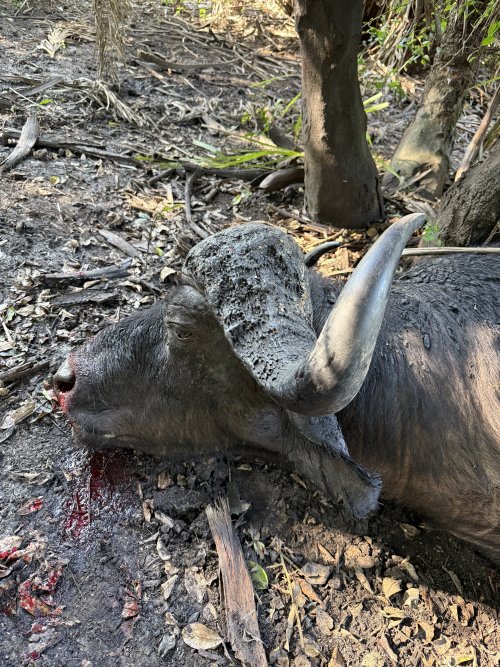


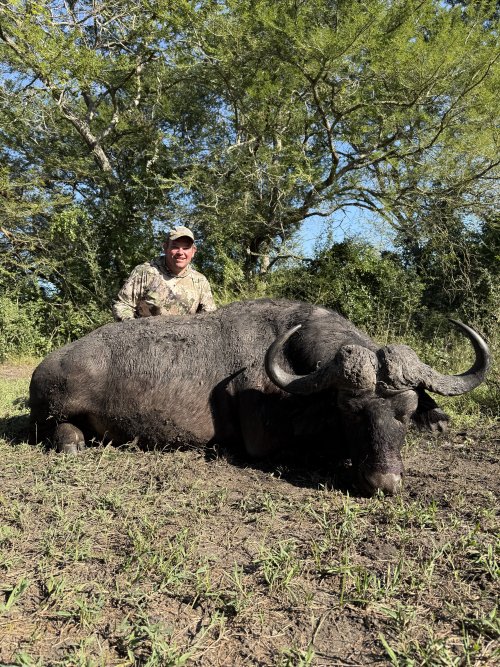
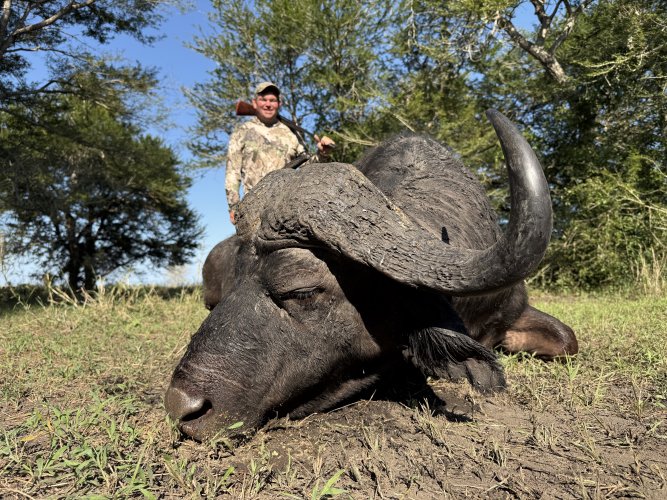
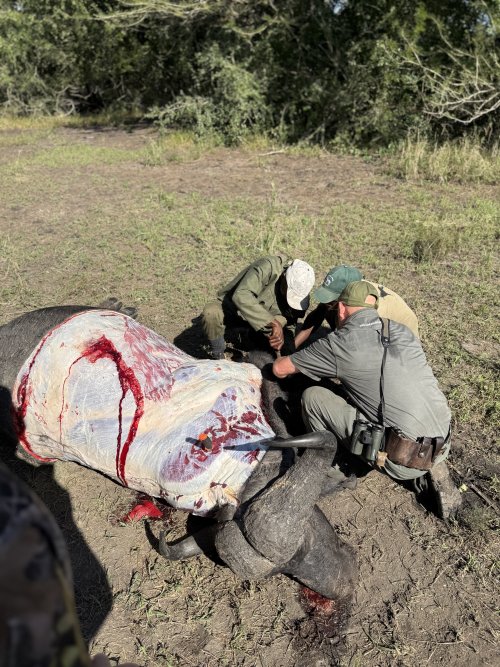
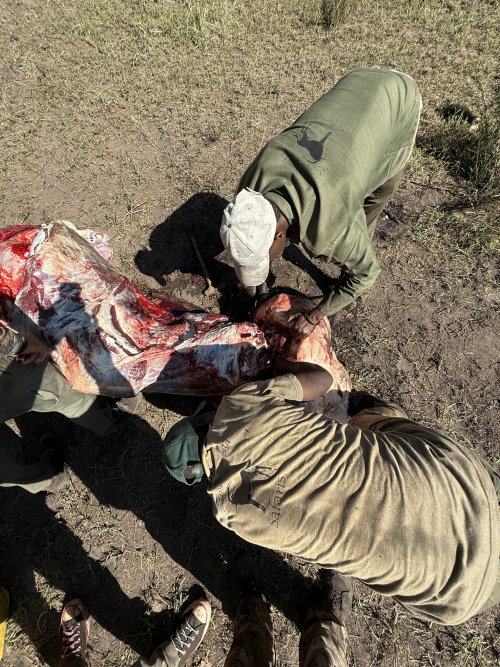
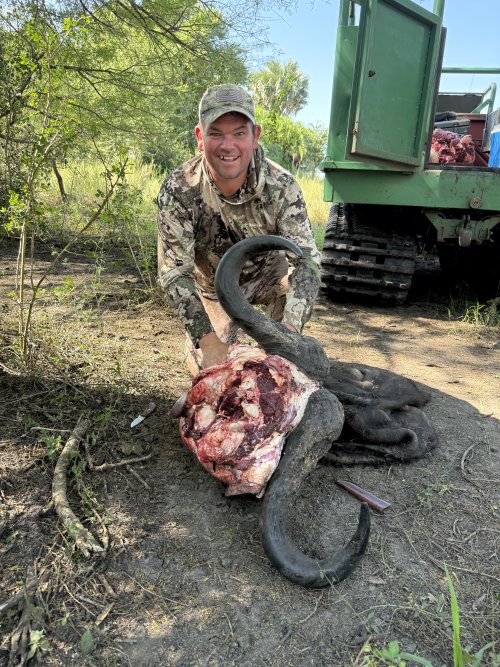 Meat care is not high on the priority list of the African trackers. All of this meat would go to the people of the Sena villages in the Coutada. Much to my chagrin as they would detach a quarter they would just set it aside in the dirt before hauling it to stack up in the back of the BV. All that was saved for the camp’s consumption was the toungue and the tail which they make into a sort of OxTail soup. Upon getting loaded and driving away, the only thing left on the ground for the giant white backed vultures to fight over was the hooves, small intestines and contents of the stomach. All the organs along with the stomach would be consumed to the last bite. As we drove away the vultures had already descended onto the remains before we were 50 yards away. It was a good morning for everyone. We headed back to the BV camp where we would load the buffalo onto the Land Cruiser where Hamish volunteered to take the meat back in so we could continue hunting.
Meat care is not high on the priority list of the African trackers. All of this meat would go to the people of the Sena villages in the Coutada. Much to my chagrin as they would detach a quarter they would just set it aside in the dirt before hauling it to stack up in the back of the BV. All that was saved for the camp’s consumption was the toungue and the tail which they make into a sort of OxTail soup. Upon getting loaded and driving away, the only thing left on the ground for the giant white backed vultures to fight over was the hooves, small intestines and contents of the stomach. All the organs along with the stomach would be consumed to the last bite. As we drove away the vultures had already descended onto the remains before we were 50 yards away. It was a good morning for everyone. We headed back to the BV camp where we would load the buffalo onto the Land Cruiser where Hamish volunteered to take the meat back in so we could continue hunting.I plan to do all the taxidermy, I’m on the fence as to whether I will mount him or just do the skull though. I’ll have to take measurements on the cape but the head didn’t really look any shorter than the other mounted buffalo I saw on the trip, or the half dozen I was looking at the other day in my bosses trophy room. I saved the buffalo cape to be sent back here to the tannery but I really don’t have any room for one. Lol, I don’t really have room for hardly any of this. The non negotiable mounts are the bushbuck and the Nyala (spoiler alert:coming soon!) I’ll probably mount the reedbuck too, since it’s no bigger than a small whitetail.Sweet!
I wonder if your buffalo has a somewhat shorter face than normal ? It would be interesting to ask the taxidermist (you??) who will be doing the mount if they used a standard form.
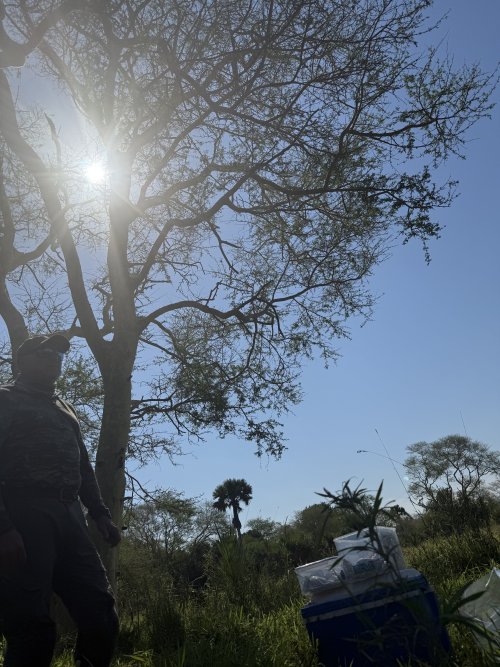 After another bush lunch in the shade of the fever trees we set off. There wasn’t hardly a place you could go that you didn’t have some game within sight. It certainly makes for interesting days afield. We hadn’t gone far when we spotted a nice warthog the was taking a mid day snooze in a stalkable location. Since dad was still bowhunting and I had just spent the morning getting a buffalo he was up to bat. I sat with Joseph watching from the top of the BV while dad, Bredger and Vasco closed the distance. I could see them but couldn’t see the pig, and when they got in range I was close enough I could hear the shot. We quickly jumped down and headed over to see what the outcome was.
After another bush lunch in the shade of the fever trees we set off. There wasn’t hardly a place you could go that you didn’t have some game within sight. It certainly makes for interesting days afield. We hadn’t gone far when we spotted a nice warthog the was taking a mid day snooze in a stalkable location. Since dad was still bowhunting and I had just spent the morning getting a buffalo he was up to bat. I sat with Joseph watching from the top of the BV while dad, Bredger and Vasco closed the distance. I could see them but couldn’t see the pig, and when they got in range I was close enough I could hear the shot. We quickly jumped down and headed over to see what the outcome was.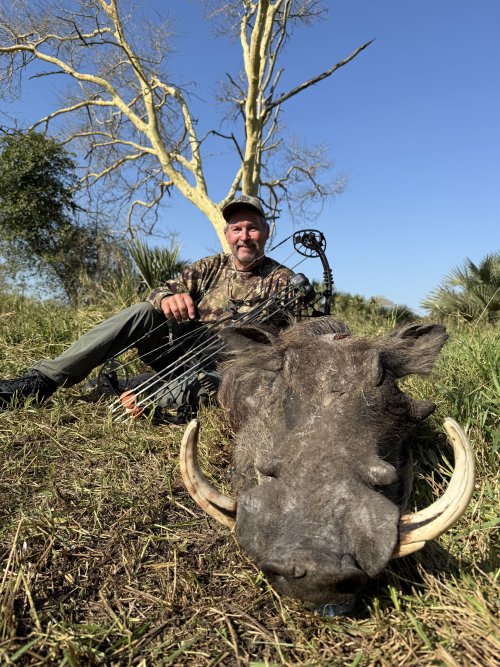
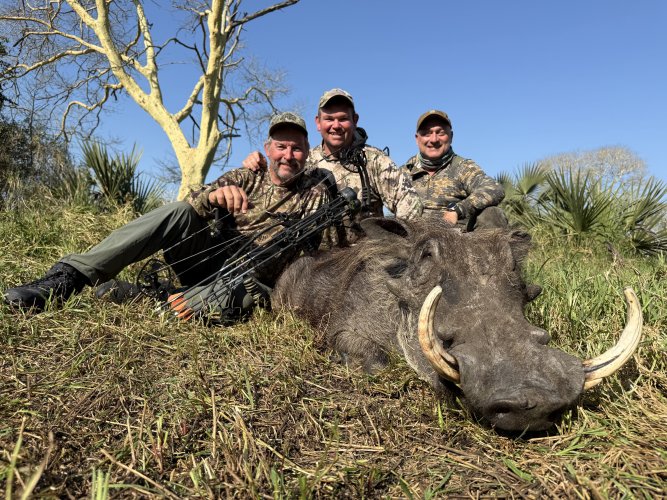
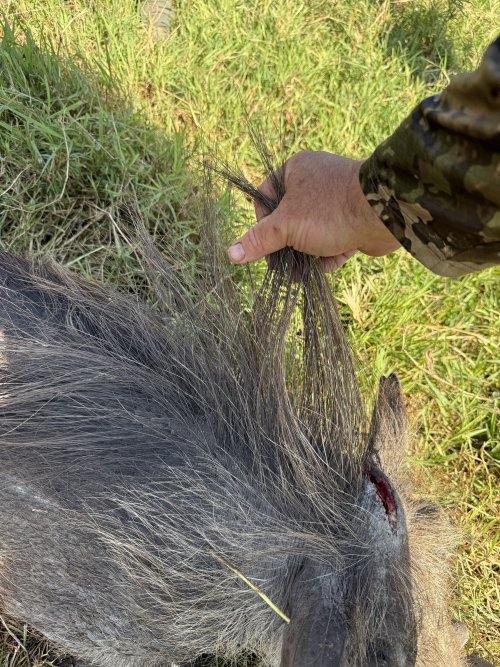 It’ll make for an interesting skull mount and tell the story along with it. This was turning into a very eventful day and we still had several hours left.
It’ll make for an interesting skull mount and tell the story along with it. This was turning into a very eventful day and we still had several hours left.
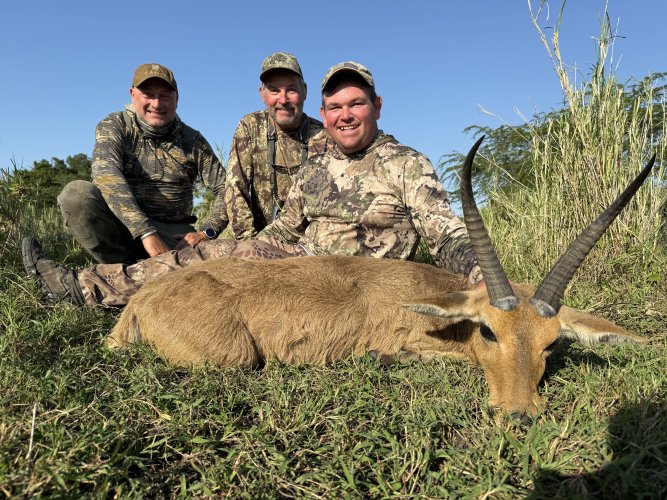
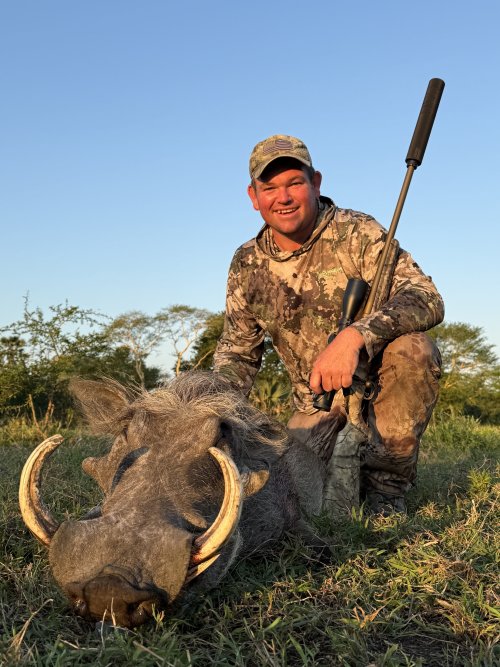
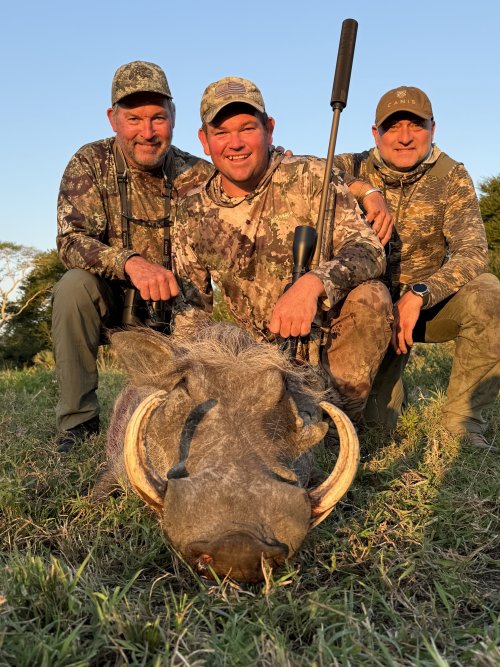

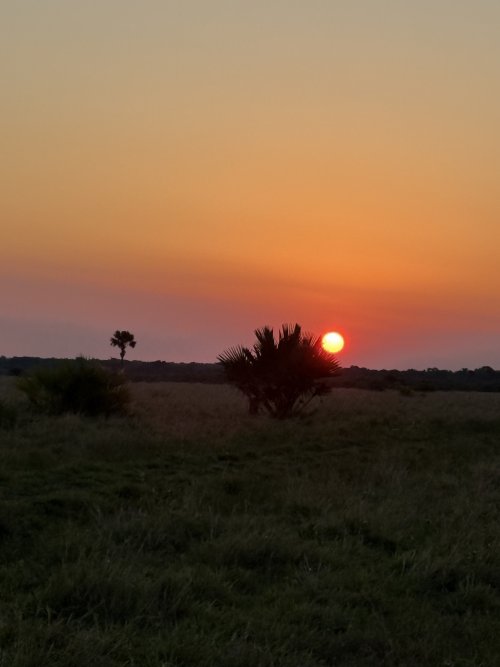
Unfortunately no, the week before we arrived there was a hyena that had been hanging near enough to camp to be heard, but he was absent or silent during our tenure. I did see his tracks one day though. They just released some more to augment the genetic pool there because the numbers are low. The original 24 lions reintroduced, that have grown to well over 100 lions now, were also silent during our visit, or too far away to hear. We did see the tracks of lions quite often.Did you get to hear lions roaring? Or hyenas yipping it up?
I'm feeling "homesick" seeing the photos.
 The kids heard the cruiser coming and came quickly chasing behind down the road in our wake like so many dogs do back home.
The kids heard the cruiser coming and came quickly chasing behind down the road in our wake like so many dogs do back home. 